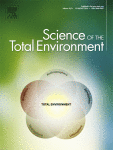Science of The Total Environment 562, 2016, 179–190
We study the influence of phasing out a cement plant on the heavy metal (Hg, Pb and Cr) content in the surrounding soils, taking into account factors often neglected, such as contributions due to local lithology or land use. The range of total Hg was 10–144 µg kg− 1, reaching up to 41 and 145 mg kg− 1 for total contents of Pb and Cr, respectively. Forest soils showed higher concentration of Hg than prairie soils, indicating the importance of land use on the accumulation of volatile heavy metals in soils. In forest soils, total Hg showed a trend to decrease with soil depth, whereas in prairie soils the vertical pattern of heavy metal concentrations was quite homogeneous. In most cases, the distance to the cement plant was not a factor of influence in the soils content of the analyzed heavy metals. Total Pb and Cr contents in soils nearby the cement plant were quite similar to those found in the local lithology, resulting in enrichment factor values (EF's) below 2. This suggests that soil parent material is the main source of these heavy metals in the studied soils, while the contribution of the cement plant to Pb and Cr soil pollution was almost negligible. On the contrary, the soils surrounding the cement plant accumulate a significant amount of Hg, compared to the underlying lithology. This was especially noticeable in forest soils, where Hg EF achieved values up to 36. These results are of relevance, bearing in mind that Hg accumulation in soils may be an issue of environmental concern, particularly in prairie soils, where temporal flooding can favor Hg transformation to highly toxic methyl-Hg. In addition, the concurrence of acid soils and total-Cr concentrations in the range of those considered phytotoxic should be also stressed.

